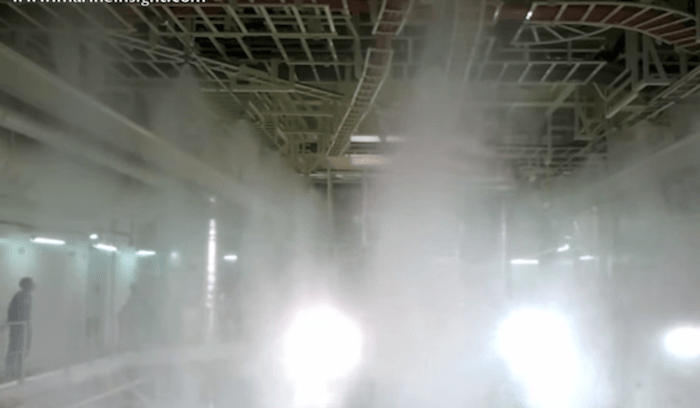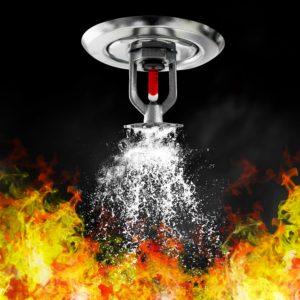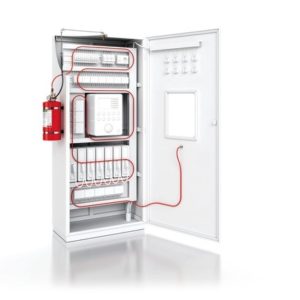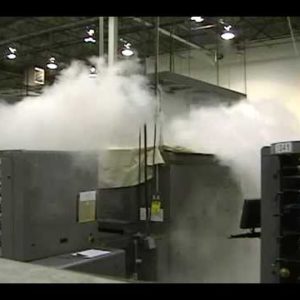Description
These systems can be used for flammable liquids and electrical rooms – the mist evaporates and causes mainly a starving of oxygen effect rather than cooling. NOTE – it’s a common misconception that this happens for all water-mist systems BUT the fire needs to be at a high temperature for the mist to evaporate and reduce oxygen. If the fire is not hot enough it would be suppressed but by cooling, hence possibly causing damage.
Open head – a nozzle which simply propels the water out. This is usually triggered by automatic fire detection (AFD).
Closed head – has a heat fractured bulb which when acts as a valve and releases the water, just like a sprinkler.
Cylinder systems – usually applied for smaller risks, the cylinders (a mix of water and nitrogen) are placed in or near the room and small pipework is then run to the nozzle position.
Tank/pump systems – usually used in larger systems. These systems work in a similar way to a sprinkler system where a large amount of water is supplied by the in-house water supply. It has to have a surplus spare and be able to be re-filled within a certain period. Tank and pumps must comply to BS/EN 12845.
The pumps may also need a high voltage supply with a backup or Uninterrupted Power Supply (UPS), possibly even a generator.
Valves – these act as taps and let the water flow to the particular areas of cover.
Advantages
- Doesn’t require automatic detection as the heat fracture bulbs (frangible bulb) can be used to detect a fire.
- The agent is cheap or free so it’s not expensive to cover a large area, and it’s also quick and easy to replace after discharge.
- No mess and flooding – when compared to chemical kitchen fire suppression and sprinklers.
- No large water storage or pump power requirements – when compared to sprinklers that need large pumps(sometimes with back up) and tank reservoirs.
- No large amounts of pipework infrastructure required when compared to sprinklers for large sites. Local application cylinder based systems can be used on a large site rather than installing a large network to deliver water to all areas.
- Rapid cooling below re-ignition temperatures.
- Small pipe gauge – easier to install.
- Can be triggered by any normal fire suppression system or detection, giving greater flexibility over sprinklers.
- Can be triggered in separate zones by the related detection and valve in that area.
- Can be released manually from break glass call points – sprinklers cannot.
- Can be used for kitchen fire suppression
Disadvantages
- No British Standards apply and there are few manufacturers and distributors. (NOTE – a draft development was introduced in late 2011.)
- Still not widely recognised as an alternative to sprinkler and gas.
- Could cause water damage if triggered falsely.
- Pump systems (not cylinder) may need a high voltage power supply and back up which can add to the cost.
Applications
- Machine Spaces
- Electronic Data Processing (EDP)
- Cabinets & Generators (Local Application)
- Fryers & Ovens
- Test Cells/Facilities
- Archives
- Spray Booths








Reviews
There are no reviews yet.